A couple of interesting original art pieces by Edmond came up on Heritage this week and this made me want to draw attention to his WECA work in this week’s post.
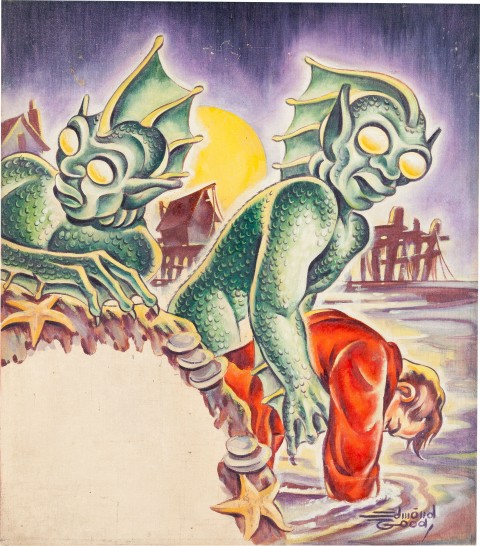
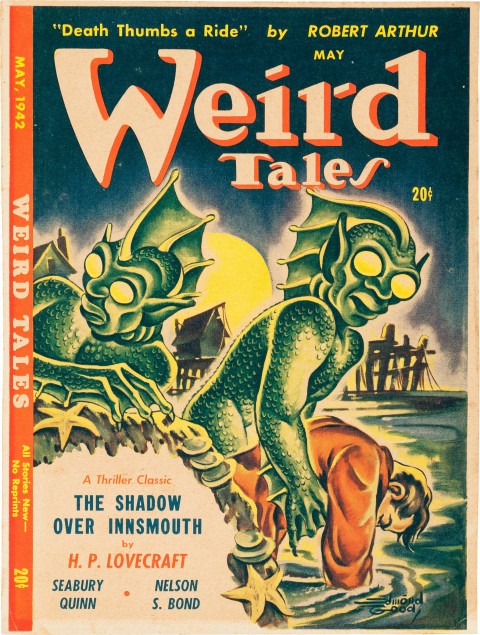
The first piece is an original Canadian pulp cover for May, 1942 issue of Weird Tales. This was the first issue in the second series which ran from May 1942 to November 1951. This issue is the Canadian edition of the January 1942 issue in the States with a new cover and the contents in a different order. This two issue lag behind the American editions lasted up till January 1945 and continued to run one issue behind until the last issue. This seems to be the only cover signed by Good.
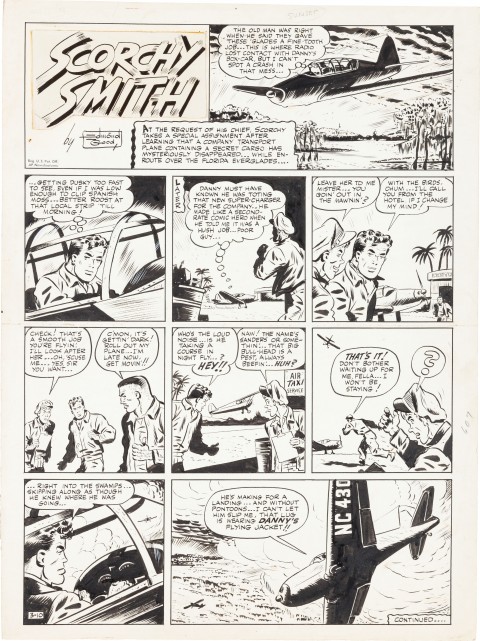
Secondly a “Scorchy Smith” Sunday page from the mid-forties when he was based in upstate New York. Good took over Scorchy from Frank Robbins who left the strip to work on Johnny Hazard in 1944 (I can’t leave out the great Noel Sickles who took over the strip from its creator John Terry –brother of well known animation artist Paul Terry—in 1933 to 1936). It appears that Good worked on Scorchy Sunday only for a couple of years from 1944-46 with the first strips appearing at the start of 1944 but he ran with the dailies into the fifties.
Edmond Elbridge Good was one among a number of Bell artists (including Adrian Dingle, Jack Tremblay, Avrom Yanovsky, Oscar Schlienger and the Kulbach brothers) who was not born in Canada. Good was on July 1, 1910 in Saco, Maine to Canadian parents born in the Maritimes. His parents came back to Canada while he was about 10 and settled in Hamilton, Ontario. Edmond grew up in the Westdale area at 74 Paisley Ave. North in between McMaster University and Churchill Park..
After high school (probably Westdale Secondary in Hamilton) he attended the Hamilton Art School and became a professional commercial artist. He married Audrey Harrison in 1936 and was probably hired by Cy Bell and made Art Director for Bell Features late in 1941 (by which time they had two children, Aledra and Barton) and he served as such only for a few months until the arrival of Adrian Dingle in the late Spring of 1942 (Triumph Comics No. 7 May/June 1942) who became the new Art Director for Bell. Edmond Good was one of two artists (the other was Leo Bachle) who had a “Pen Portraits” page in Dime Comics. Good’s was on the inside front cover of Dime Comics 9.
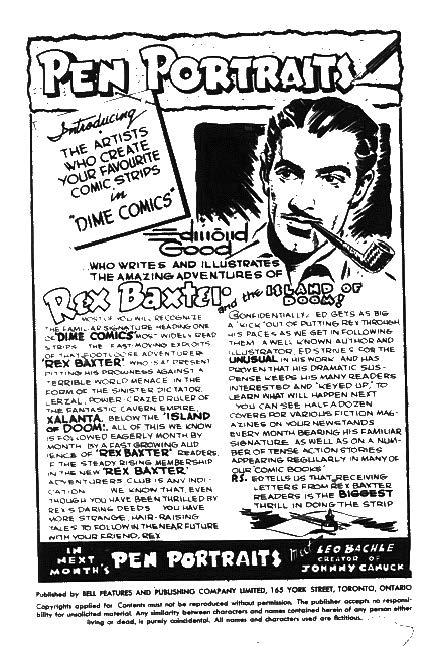
Good’s first work for Bell was the creation of Rex Baxter for Dime Comics No. 1 (Feb. 1942) as well as writing credits on a text story entitled “Devil Wolf” in Wow Comics No. 5 and a text story credited to both himself and his wife entitled “A Trail of Plunder” (both these stories were illustrated by Murray Karn) in Wow Comics 6. He also did a filler page Good did all the covers for Dime Comics up to No. 13 and for Wow Comics 8-13, and for Commando Comics 1-6, as well as Active Comics issues 11 and 13.
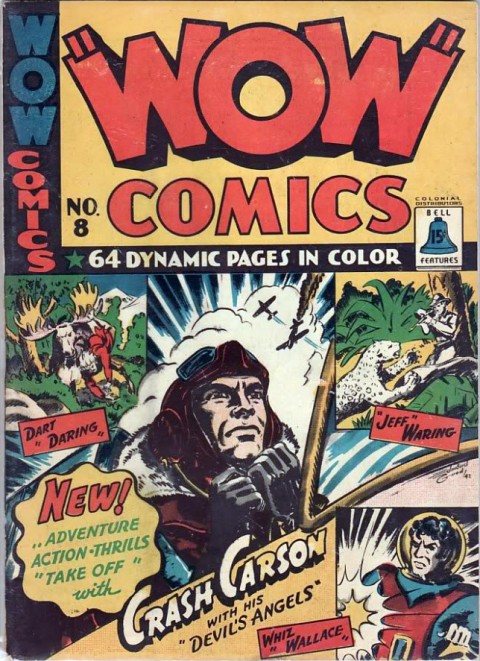
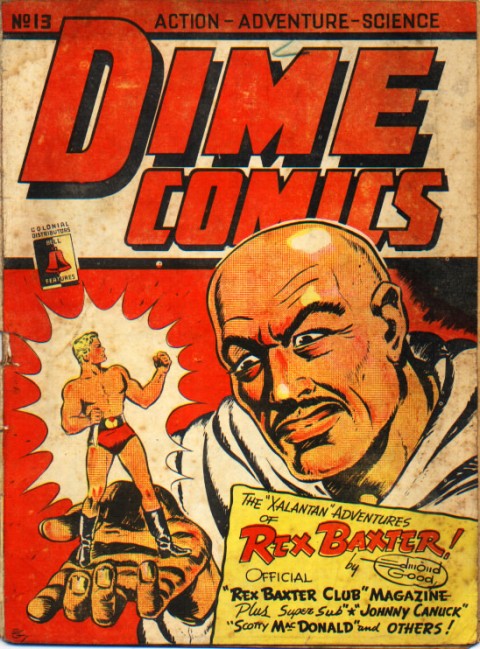
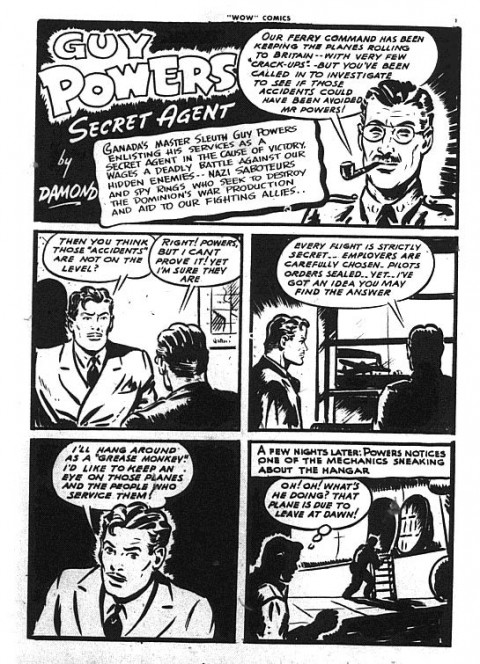
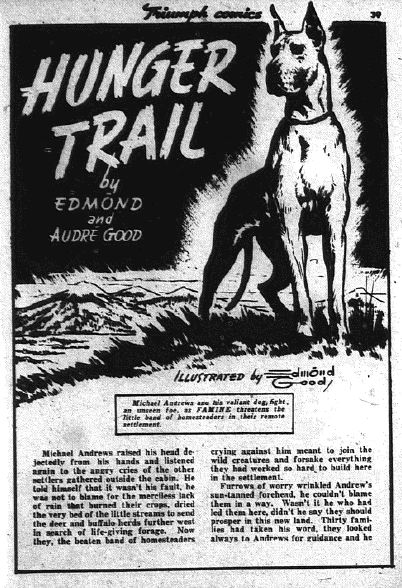
At the same time he was working on Bell comics, he also did some pulp cover work and besides the Weird Tales issue above there are at least two signed Canadian Pulp covers for Thrilling Detective Stories from 1942.
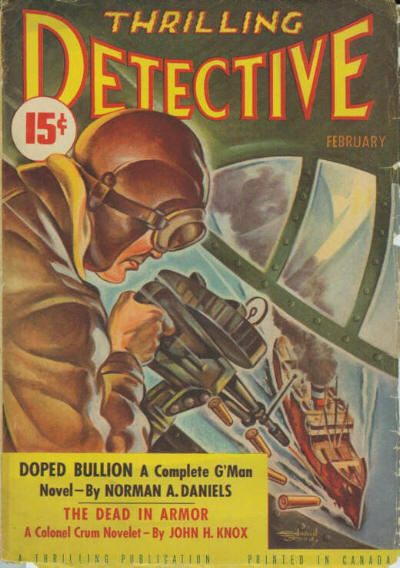
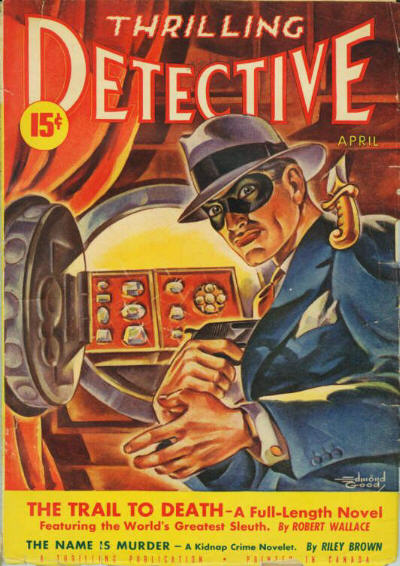
By the summer of 1943, Good appears to have been working on settling in the U.S. permanently and had a residence in the artistic enclave in Connecticut. By the end of 1943 or the start of 1944 the family was living in Kingston, upstate New York.
Along with the Scorchy material he was doing the “Mike Gibbs, Guerilla” strip in issues 90-94 of Adventure Comics in 1944. Good is best known for doing Phantom Detective stories in Thrilling Comics from 1946-48, being the original artist on the Tomahawk who first appeared in Star Spangled Comics 69 in 1947, the good girl art he did in Dagar Comics in 1948-9 and the long run he had with the title character in Monte Hale Western Comics for Fawcett from 1949-53.
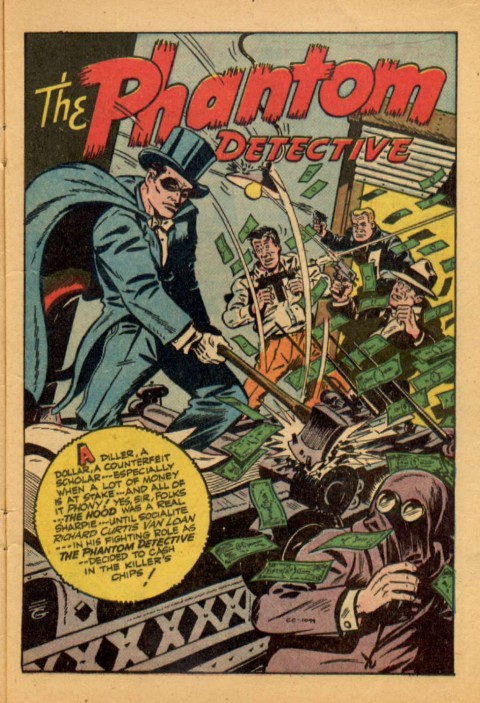
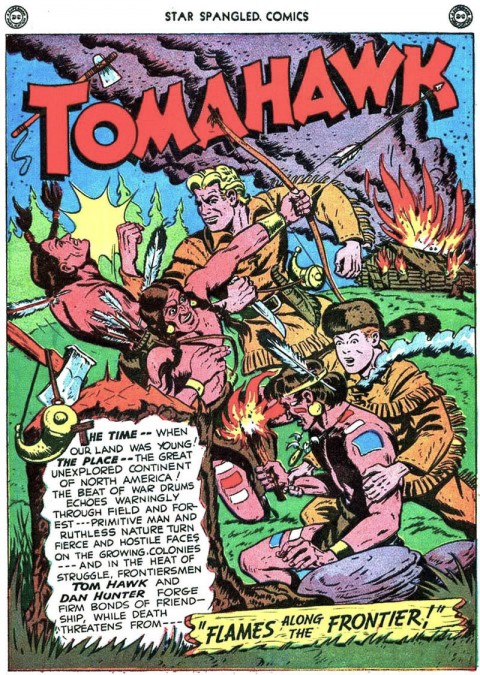
In the mid-fifties he established his own publishing company Good Comics Inc. and put out four issues of Johnny Law, Sky Ranger Comics which was written and drawn by Edmond Good.
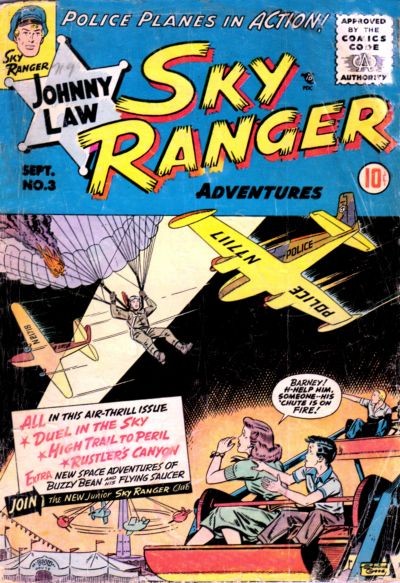
After the mid-fifties, Good seemed to drift away from comics and into commercial/advertising art and found work in Albany, New York, even setting up his own advertising agency in Syracuse for a while. Having been successful in writing radio scripts and winning the script writing contest for the Dr. Christian Radio Show in 1951, Good also began to write television scripts successfully and had some accepted for Kraft Theatre and even the BBC.
By the end of the fifties he had moved the family to Florida and was hired by Tupperware at its Orlando headquarters as its Artistic Director, a position which he held until his retirement in 1974.
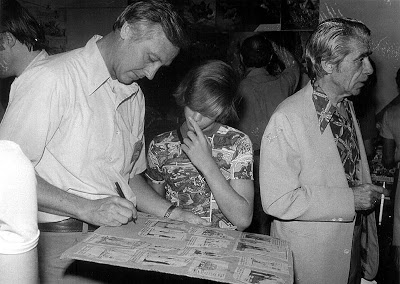
In 1977 he moved from Orlando to Altoona where he died on September 13, 1991.
I hope that the painting for the Canadian cover of the Weird Tales pulp finds its way back to Canada at the end of the auction.

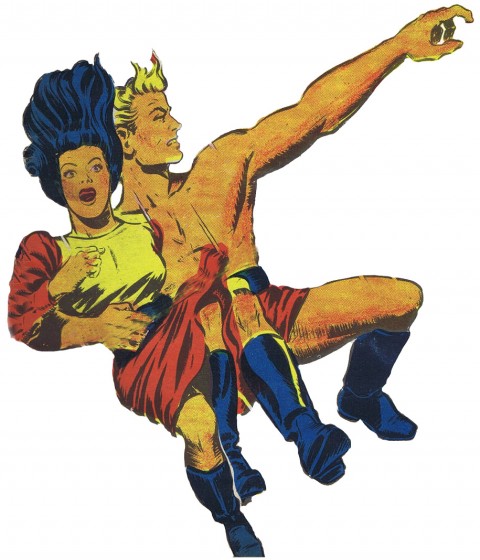
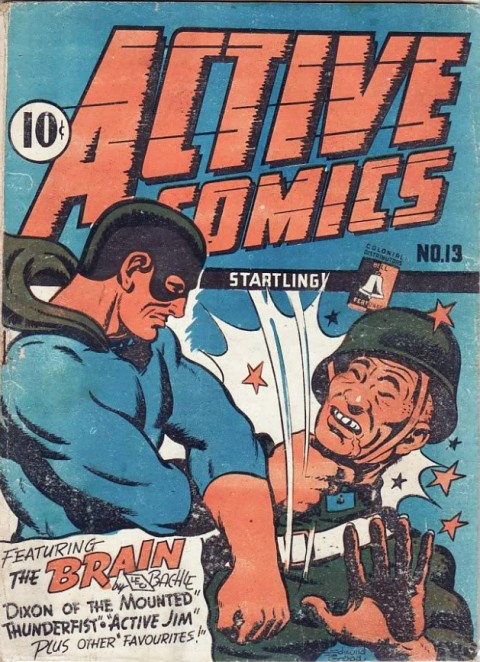
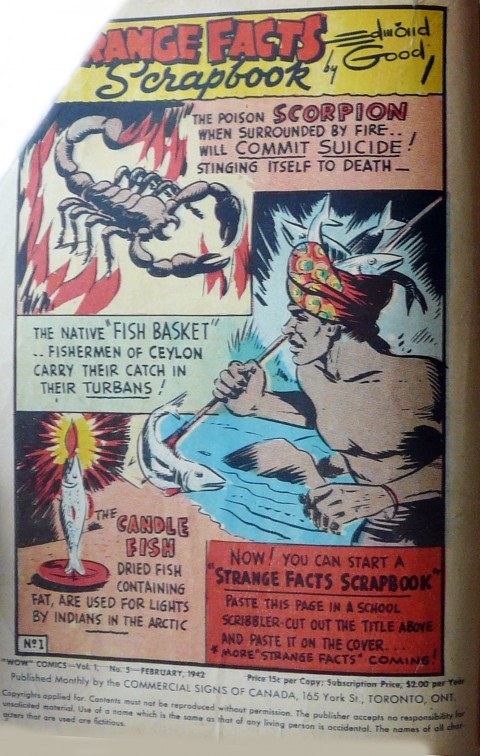
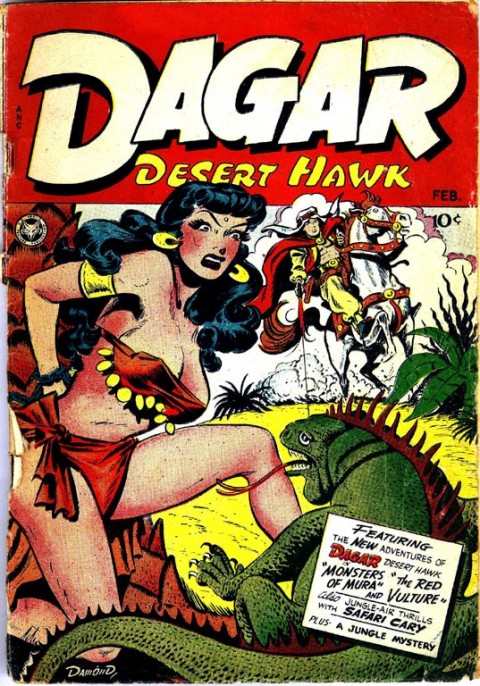


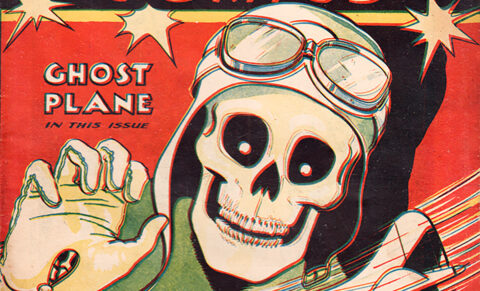
Its been nice seeing the Edmond Good art surfacing recently, hopefully there is more to follow
You’re right, Tony.What’s coming up now is from Edmond Good’s son Bart. He also put up that Hal Foster Prince Valiant page on Heritage this month. I think you’ll be seeing a bit more before this is through.
Ivan, great article. Wonderful to learn more about Good. That Dagar 14 cover – I’ve loved that errrm “bountiful” cover since the first time I saw a photojournal. Had no idea that Damond = Ed Good! Great info 🙂
Ivan, wonderful piece on Edmond Good. I’ve wanted to know more about him, and Googled your piece. I had NO idea about the Canadian pulp covers he did. Would I love to find some of those. Also, I was floored to read your thread about the recent Comic Link results for the Canadian comics. I truly did a double-take at those prices. I collect Whites myself, but rarely find them in my hunting. My collection is very modest. I thought they were getting expensive then some dealers were asking more than $50 for average issues, and up to $250 for a few. I tend to agree that this is somewhat of an abberation, at least for less unusual issues. I see a lot of scarcer American comics, such as Centaurs and unusual titles early forties titles, going for way over guide in Heritage auctions. I think just a few well-heeled folks are driving up the market, at the same time a lot of old-timers are beginning to let go of their collections which should bring a lot of more average GA onto the market. I’m still a very active collector, at 61, but the guys on their 70s and 80s now are letting things go. I already this very clearly in the Big Little Book market, small and large collections are flooding the market as old-timers let them go. With little interest from younger fans, except for the best of the best, there are way to many books chasing too few buyers.
Thanks for your comment, Bud. I remember buying from you in the old Comic Book Buyers Guide tabloid in the late sixties and early seventies. As a long-time American collector, do you think that the Whites will ever find a niche with American collectors. Do you think they’ll ever appeal to the guys down below the border?
Thank you Ivan for information I never knew about my uncle. I have lived in in Ontario Canada all my life and did not know him very well. Last time I met Uncle “Mond” was in the 70’s when I visited him and my Aunt Audrey at their home in Orlando Florida, He gave me a book that he purchased in 1925 titled Woodcraft by Ernest Thompson Seton that I was just looking at it again so I decided to “Google” his name and came upon your website.His pride and joy was his Studebaker Hawk car that I admired sitting in his driveway. He told me that he was always getting people wanting to buy his car and even had a Corvette owner willing to trade his current car for his Hawk.
One of the best things about doing this column is comments and responses like yours. Thanks for chiming in and for the story about the Studebaker Hawk. I’m a Hamiltonian so I remember the old Studebaker factory.
Great to see those again! I am Brant Edmond Good, Edmond Goods Grandson. My father is Barton. As you can imagine when I was growing up story time with my grand dad was always interesting. He was a great storyteller